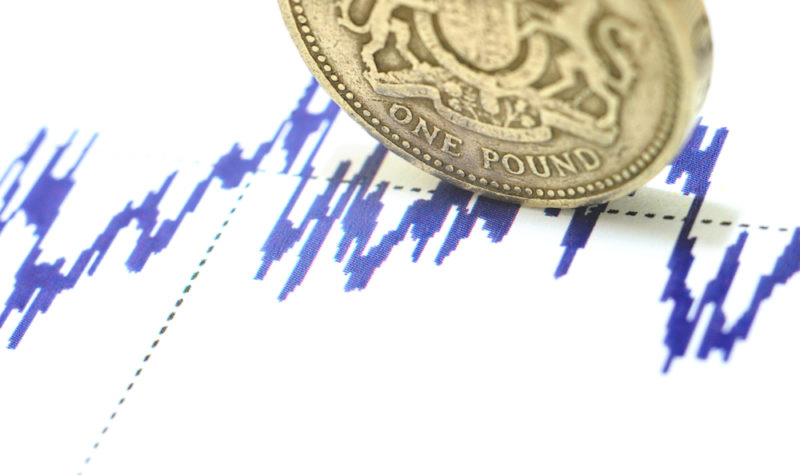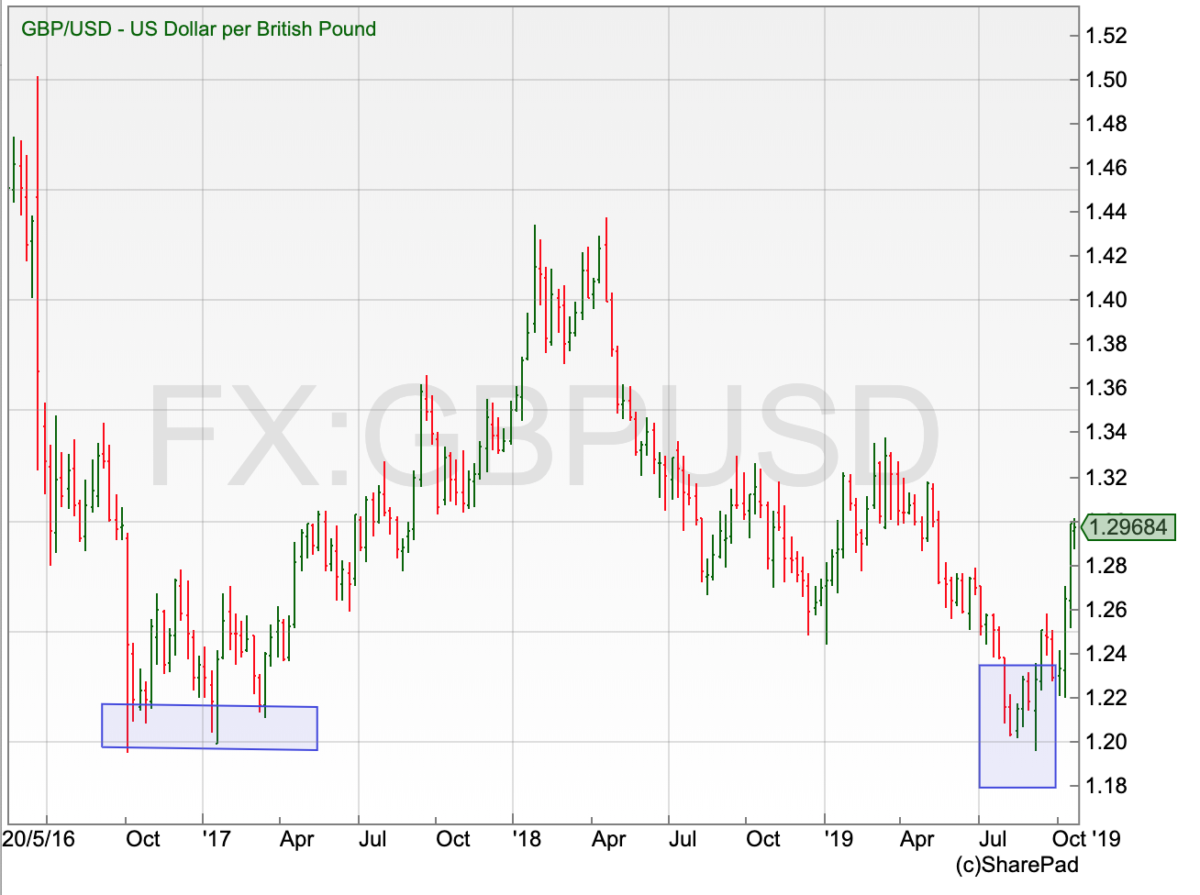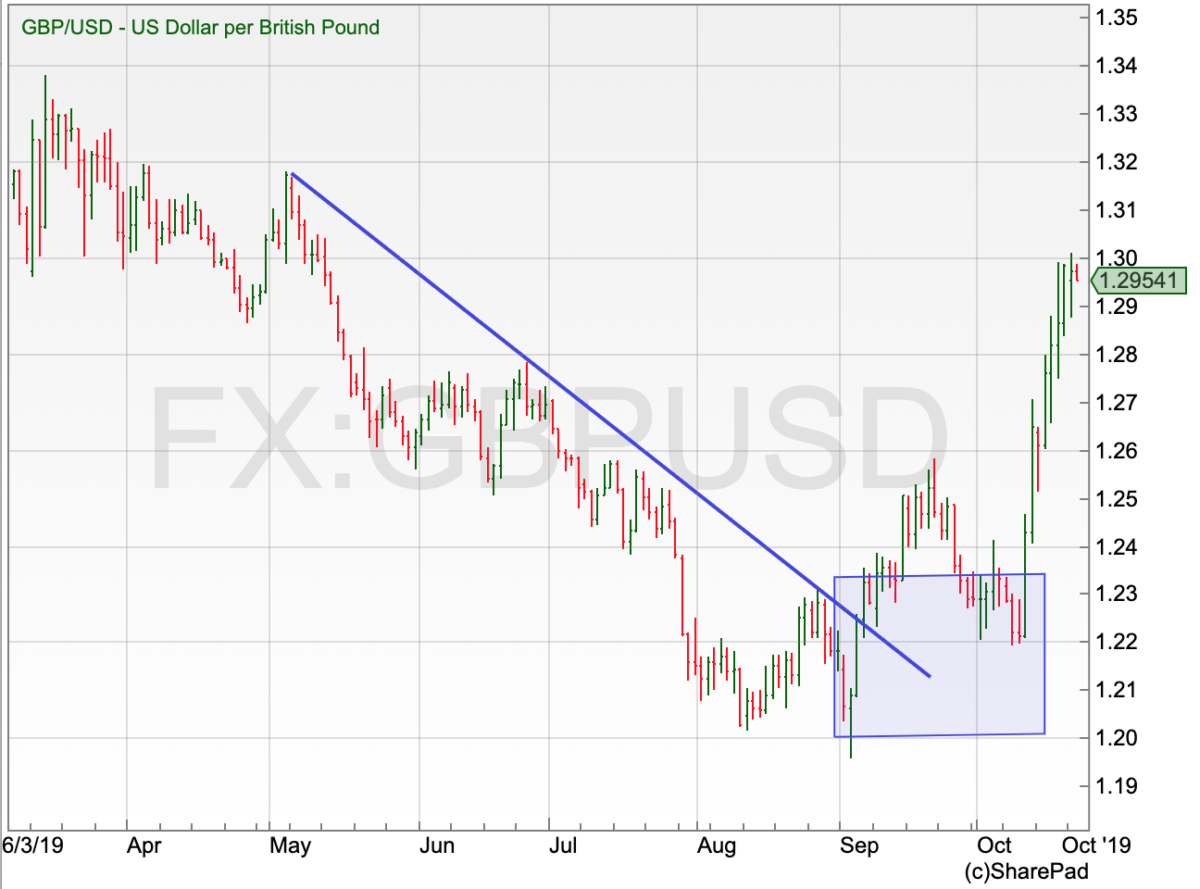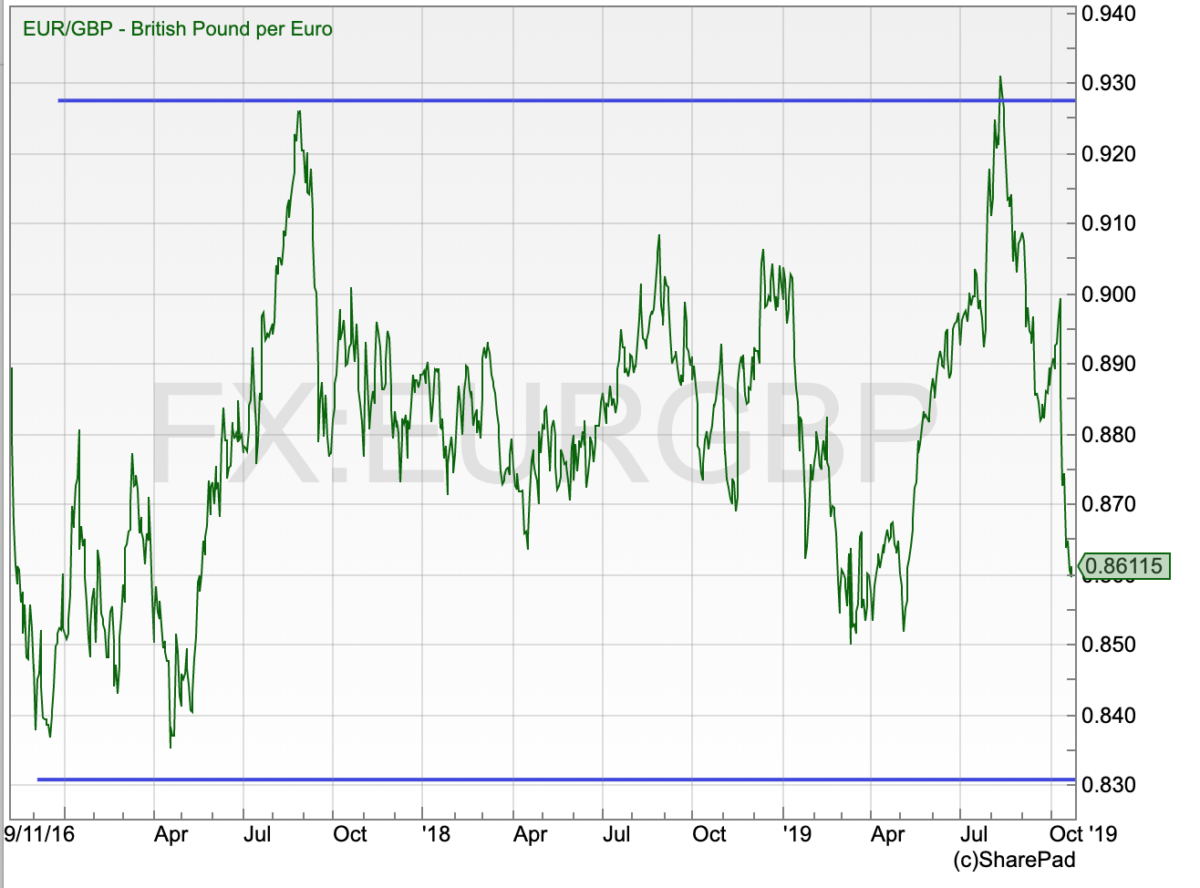Is the low finally in for the pound?

Veteran trader David Jones speculates that the pound’s long decline could be over, despite the apparent impasse over Brexit.
| First seen in Master Investor Magazine
|
Politicians dragged their feet for much of October over deciding just what to do about Brexit and that 31 October deadline. But had the market already voted with its wallet on the next major move for the pound, over the months ahead?
Historical lows bolster the pound once again
One of my favourite cynical quotes particularly relevant to financial markets is: “avoid predictions – particularly those involving the future”. In this day and age, we are plagued by experts on all sorts of media giving their carefully considered views about just what will − or will not − happen on a whole range of topics and markets. I think plenty of these can be taken with a large pinch of salt – and probably none more so than the various opinions over the past three years on what would happen with the next stage of the Brexit discussions.
I am writing this not long after Parliament’s so-called “Super Saturday” – a description that only proved to be half true. And with Brexit progress (or lack of it) so hard to anticipate, pity the poor City analyst who has to try to forecast just what the UK’s currency might do next.
But more than a month before not-so-Super Saturday, had the marketalreadyvoted with its wallet? Here’s a chart of the pound versus the US dollar (GBP/USD) over the past few years, including that fateful referendum day in June 2016.
GBP/USD June 2016 to present

I think most of us know the pound crashed as the EU referendum results came in – it moved around 10% in very short order, which is a significant level of volatility for a major world currency. But this weakness was not just a one-day wonder. After some stability at lower levels during the summer of 2016, it moved lower again in October and in early 2017, pushing below the 1.20 level. So, the proud British pound, which less than six months earlier had been worth a dollar and a half, was now struggling to buy much more than one dollar and 20 cents.
But as can be seen from the first highlighted box on chart GBP1, this did prove to be a major turning point in terms of sentiment towards the pound. Over the next 15 months, the exchange rate recovered and had pushed almost back to 1.44. Anyone buying the pound and selling the dollar in January of 2017 saw a near 20% return by April of the following year.
And that level has once again proved to be a turning point for this latest bout of weakness − so far at least. It is a clear ‘line in the sand’ where the market perceives ’value’ for the pound. I don’t want to say “I told you so” but this was exactly the same level I was focusing on when we last looked at this currency pair two issues ago.
What is interesting here is that the turn started long before it looked as if the Brexit discussion was actually going to move along by the end of October.
GBP/USD March 2019 to present

I thought it would be appropriate to show what GBP/USD has done since March of this year, as that was the previous deadline date for the UK leaving the EU. By August the pound had lost around 10% against the US dollar, but it is clear that into September the first green shoots of optimism towards the currency were starting to emerge. GBP/USD was probing that 1.2000 level but there was no follow-through selling – the first sign that perhaps traders were becoming less pessimistic.
At the time of writing, it was still not clear exactly what was going to happen with Brexit – but financial markets would seem to have made another line in the sand down at these historical lows. I think it has shifted from a ’sell the rallies’ market to ’buy the dips’. The pound rocketed higher from the 1.22 zone in October and is looking somewhat overdue a correction. This is what I think will be the real test here – where do the buyers come back in after a bout of weakness? For now, the 1.20/1.22 zone is seen as solid support. Buying after a sell-off has seen a couple of days of stabilisation would therefore seem an interesting opportunity, as there does appear to be more of a mood of optimism despite ongoing parliamentary differences.
What about the euro?

The euro/sterling rate (EUR/GBP) has been somewhat directionless over the last three years, although there has been plenty of volatility as it has swung around in its wide sideways range. Clearly Brexit has an impact on the EU economy as well as the UK – and the European economy is not having the best of times anyway at the moment, with Germany for example slowing significantly during 2019. The pound strength in recent months has pushed the euro, as seen in chart GP3, back towards its lowest point for the year so far, where one euro is worth about 86 pence.
| First seen in Master Investor Magazine
|
It is difficult to see any significant change to this range in the short term – the euro recently hit a two-year low against the US dollar so remains under some pressure on the wider foreign-exchange market. The US dollar has had a strong run against many currencies over the past 18 months but with the global economy showing signs of slowing at least slightly, perhaps the dollar will give up some recent gains, which should only help the euro and the pound.
The UK’s currency is still the best way to gauge what financial markets feel about the whole Brexit process – and how the economy may look after an exit. Pessimism has undeniably been the dominant tone over the past six months but, given what we have seen since the summer, I do feel that 2020 could be a different story for the pound. As much as I should follow my own advice and avoid predictions whenever possible, it looks like it could be a year where we see the currency continue to recover.
 Never miss an issue of Master Investor Magazine –
Never miss an issue of Master Investor Magazine –
Comments (0)